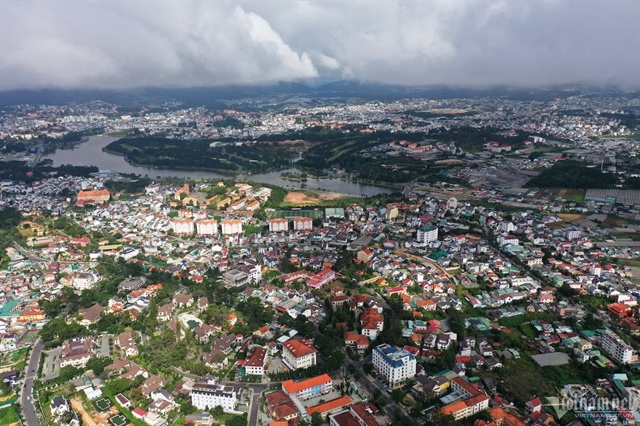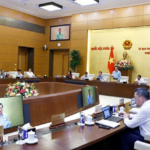Quang Tri Province, after its merger with Quang Binh Province, covers an area of nearly 12,700 square kilometers, with a population of over 1.8 million people, and is expected to comprise 78 administrative units at the commune level.
The Standing Committees of the two provinces have discussed and agreed on a personnel plan for the provincial party committee after the merger. Accordingly, the Executive Committee of the Quang Tri Provincial Party Committee (new) consists of 63 people, the Provincial Standing Committee has 18 members, and the Provincial Inspection Committee has 15 members.
Specifically, 15 committee members have been assigned to hold the position of party secretary in various communes and wards, including three members of the Provincial Standing Committee who will serve as party secretaries in wards with significant economic, infrastructure, transportation, and urban development, as well as a large number of party members and residents.
In the meantime, Binh Dinh Province will merge with Gia Lai Province to form the new province of Gia Lai, with the political and administrative center expected to be located in the current province of Binh Dinh.
Post-reorganization, the new Gia Lai Province will span an area of approximately 21,500 square kilometers and be home to more than 3.5 million people. It will encompass 135 administrative units at the commune level, consisting of 110 communes and 25 wards.
As per the proposed organizational and personnel arrangement, the new province is expected to have 62 provincial committee members, including 33 from Binh Dinh Province and 29 from Gia Lai Province. Ho Quoc Dung, Secretary of the Binh Dinh Provincial Party Committee, informed that all provincial committee members have been suitably assigned, and there are no cases of unassigned members.
Out of the total, 14 provincial committee members have been assigned to the position of director of provincial-level departments and sectors. Additionally, eight provincial committee members have been appointed to work at the commune and ward levels, including six from Binh Dinh Province and two from Gia Lai Province.

An aerial view of Gia Lai Province. Photo: Nguyen Hue |
Regarding the new Ca Mau Province (merger of Ca Mau and Bac Lieu), the personnel plan for the executive committee, standing committee, and inspection committee of the provincial party committee has been approved by the leaders of Bac Lieu and Ca Mau provinces.
Specifically, the Ca Mau Provincial Party Committee (new) will consist of 79 members, including 58 members who are eligible for re-election for the 2025-2030 term (26 from Bac Lieu and 32 from Ca Mau). The Provincial Standing Committee will comprise 29 members, 22 of whom are eligible for re-election.
The Standing Committees of Ca Mau and Bac Lieu provinces also agreed on the membership of the Provincial Inspection Committee, which will consist of 15 people. The two provinces proposed to the competent authorities to allow for an increase in the number of members of the Provincial Party Committee for the 2025-2030 term to facilitate the inclusion of female and young cadres in the committee where necessary. The number of members of the Provincial Standing Committee will not exceed one-third of the number of members of the Provincial Party Committee.
The new Ca Mau Province will cover an area of nearly 8,000 square kilometers and have a population of over 2.6 million people. It will consist of 64 administrative units (55 communes and 9 wards), with the political and administrative center located in Ca Mau.
In the new Da Nang City, the proposed personnel plan requests the Politburo and the Secretariat of the Party Central Committee to assign 75 members to the Da Nang City Party Committee for the 2020-2025 and 2025-2030 terms, including 37 members from Quang Nam Province and 38 members from Da Nang City.
The Da Nang City Standing Committee will consist of 23 members, including 13 members from Quang Nam Province and 10 members from Da Nang City. The key leadership positions will comprise six members.
Quang Nam Province has submitted 37 personnel profiles to the Central Organization Committee for evaluation and submission to the Secretariat for consideration and decision.
Additionally, several other provinces have also approved key personnel plans, including Ninh Binh (merger of Ninh Binh, Nam Dinh, and Ha Nam), Can Tho (merger of Can Tho, Soc Trang, and Hau Giang), Quang Ngai (merger of Quang Ngai and Kon Tum), and Thai Nguyen (merger of Thai Nguyen and Bac Kan), among others.
|
In Official Dispatch No. 3308 sent to the secretaries and chairpersons of centrally-run cities and provinces, the Ministry of Home Affairs provided guidance on prioritizing the arrangement of officials with capabilities, management experience, a mindset for innovation, and a willingness to take responsibility for the position of chairman of the People’s Committee at the commune level. Accordingly, 1,065 tasks and powers of the district level will be transferred to the new commune-level administrative units for implementation, along with new tasks stipulated in the Law on Organization of Local Government (amended). The ministry also requested localities to promptly review the personnel plans for the new commune-level units. In cases where the expectedly arranged officials and civil servants do not meet the requirements, the ministry suggested seconding officials and civil servants with capabilities and experience from the provincial level to the commune level. |
The Vinh – 10:51, June 08, 2025
The Nation Will Have 3,321 Wards and Special Districts
The reorganization of communal administrative units necessitates a comprehensive approach to addressing the welfare and policies affecting full-time and part-time specialized officials.
The Government Streamlines: Over 23,000 Civil Servants Depart Through Structural Reforms
The Ministry of Home Affairs has revealed an alarming trend – over 23,000 civil servants have resigned, and an additional 9,000 are expected to leave soon, in accordance with current regulations. This mass exodus of talent poses a significant challenge to the efficient functioning of the government machinery.





















